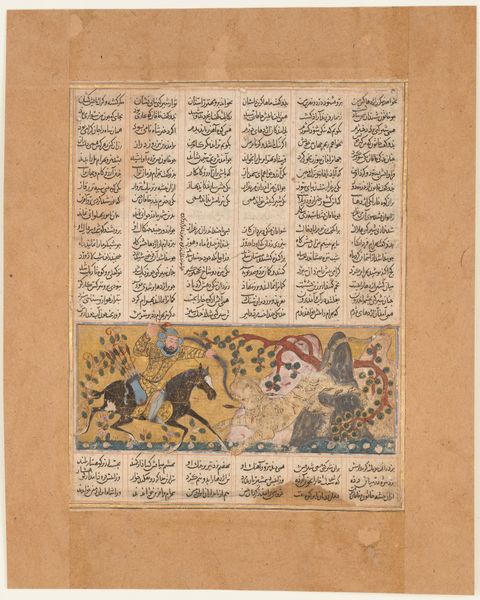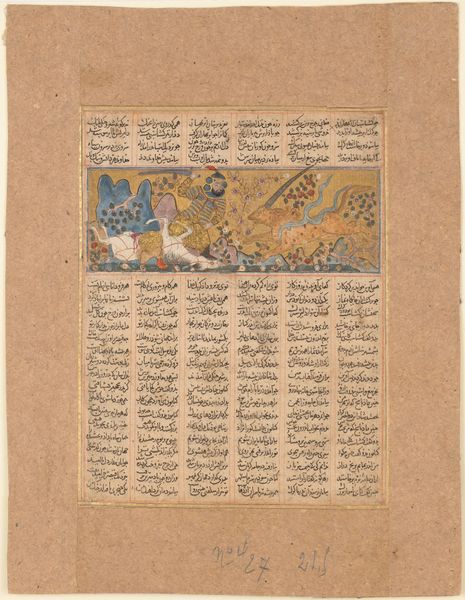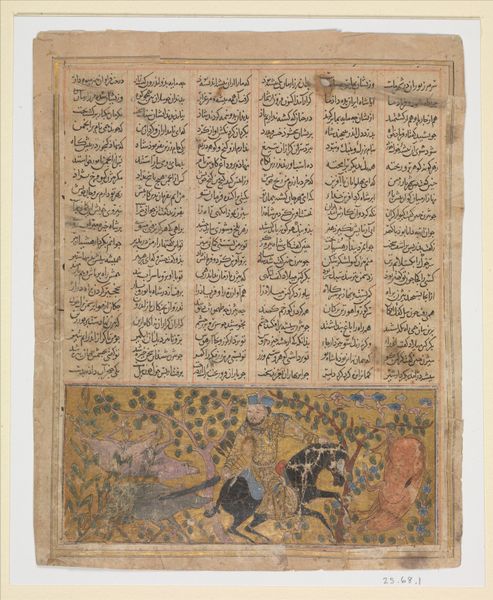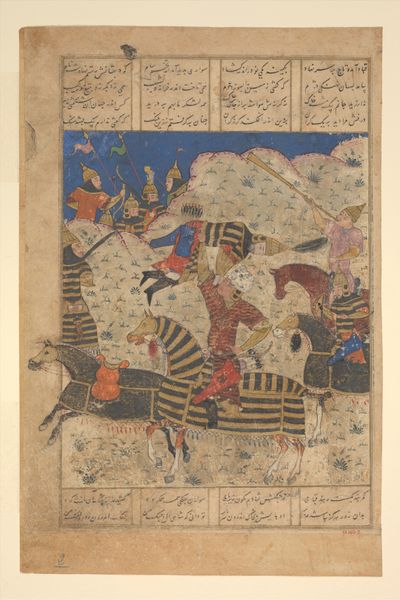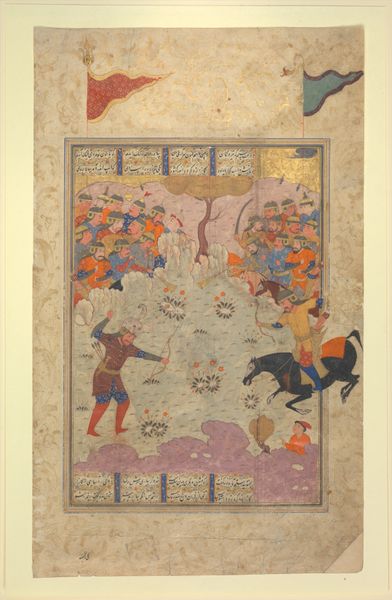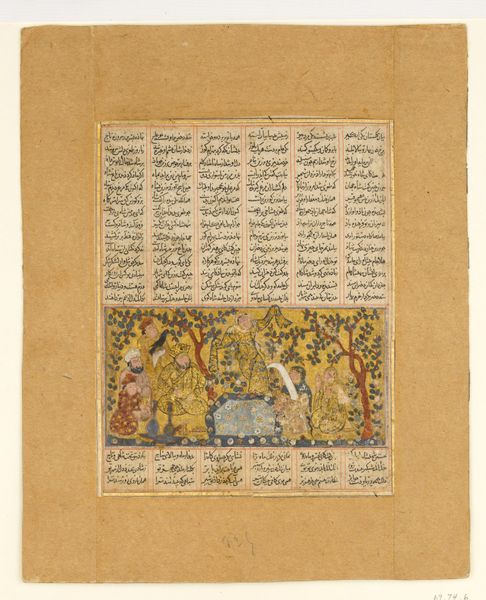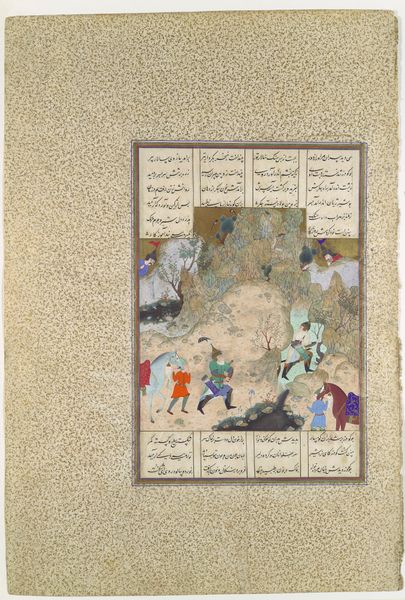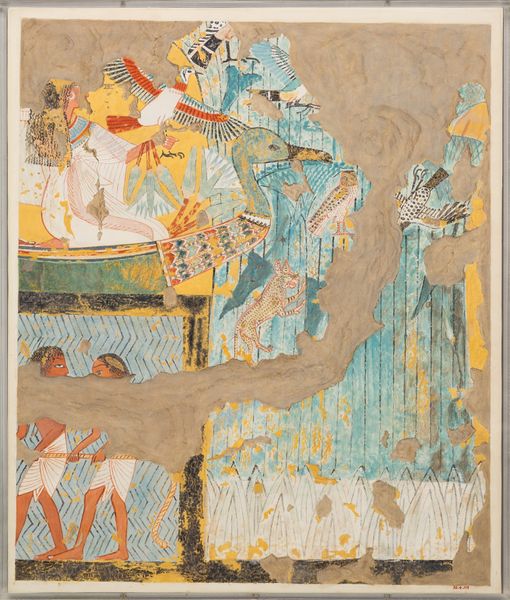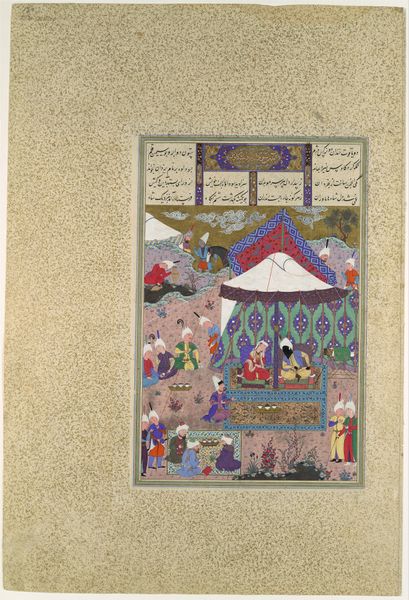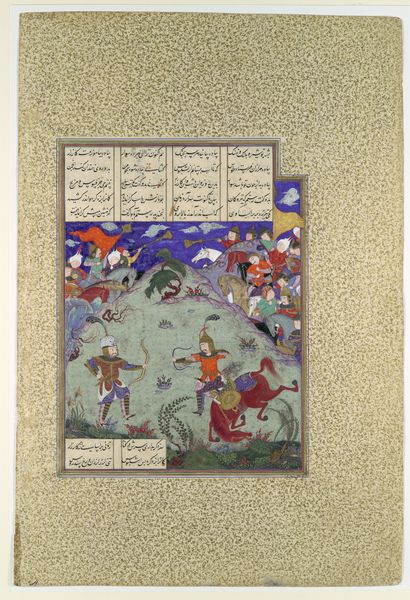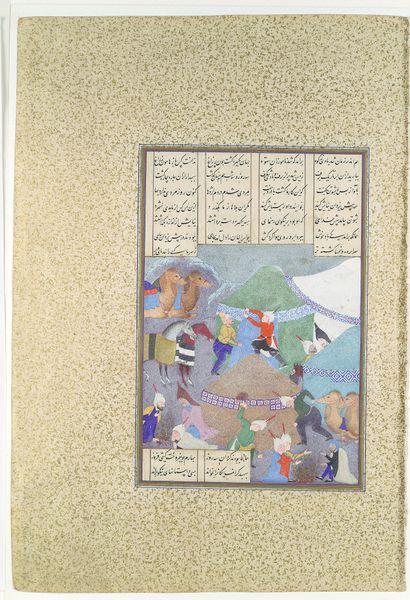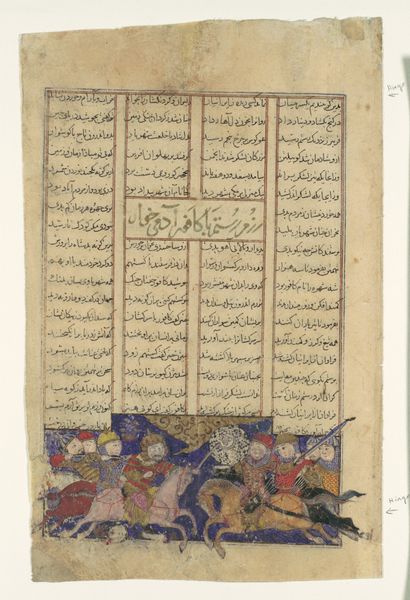
"Gustaham Kills Lahhak and Farshidvard", Folio from a Shahnama (Book of Kings) 1275 - 1355
0:00
0:00
painting, paper, ink
#
medieval
#
narrative-art
#
painting
#
figuration
#
paper
#
ink
#
horse
#
men
#
islamic-art
Dimensions: Text block: H. 6 3/16 in. (15.7 cm) W. 5 in. (12.7 cm) Painting: H. 1 15/16 in. (4.9 cm) W. 4 13/16 in. (12.2 cm)
Copyright: Public Domain
Curator: Let's discuss "Gustaham Kills Lahhak and Farshidvard," a folio from a Shahnama, or Book of Kings, dating from 1275 to 1355. It now resides at the Metropolitan Museum of Art. Editor: My immediate impression is of frenetic energy, chaotic, even. The composition feels packed with figures in motion, all within this clearly defined border. Curator: Precisely. Structurally, notice how the artist employs distinct registers. Text panels frame the central pictorial field, grounding the narrative within its literary context. The density of the figures contributes to a compressed pictorial space. Editor: The horses and riders... they're all locked in combat, swords drawn, yet almost frozen in place despite the implied movement. What do you make of the figures’ expressions? They seem so stylized, masks almost. Curator: In terms of iconography, the stylized faces and clothing represent established conventions within Persian miniature painting. These aren’t portraits but archetypes. Look at the color choices too: the vibrant blues and reds aren't realistic but serve to heighten the drama. It conveys power through its palette, even more than its explicit imagery. Editor: Yes, there's that intense red on one of the rider’s tunics which stands in stark contrast to the earthy tones dominating the background. I think it works as a signifier for valor, but it can be so difficult to untangle what certain colors and imagery mean cross-culturally, as we inevitably carry our own experiences and perspectives. Curator: Indeed, it reminds us that images can become powerful carriers of cultural memory. To unpack meaning requires careful consideration of historical and symbolic context, because, after all, that memory changes its weight depending on the container. Editor: Examining the use of text to border an illustration also expands how we perceive the artwork's cultural and textual narrative impact. Curator: It enriches it, adding nuance beyond pure aesthetic experience. Editor: I’ll leave today appreciating how the Book of Kings visually preserved a history for the time and cultures that it would have encountered through trade, exhibition, or conversation.
Comments
No comments
Be the first to comment and join the conversation on the ultimate creative platform.
